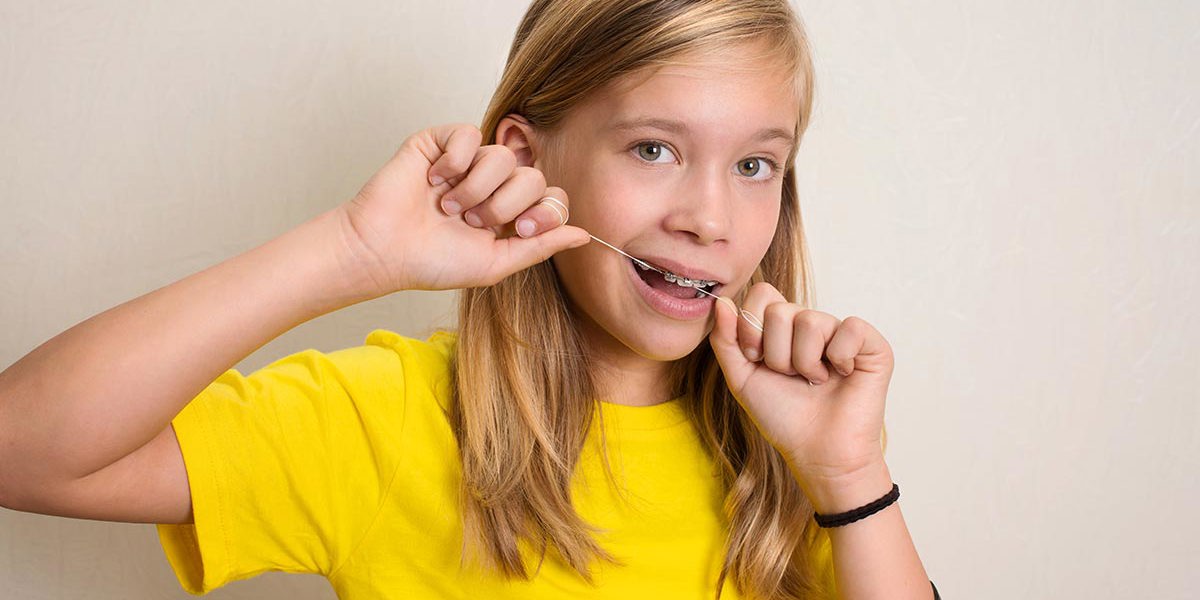
Are you guilty of neglecting to floss your teeth as part of your oral hygiene regime? Many people fall into this trap, which can lead to bigger problems down the line. Read on to learn why flossing is so important and our tips for how to floss properly!
How to floss properly
To floss using dental floss, follow the simple steps below:
- Break off about 30cm of floss and wind it around your middle or index fingers on both hands.
- Holding the floss firmly, guide the floss gently between your teeth using an up-and-down rubbing motion. Be careful not to forcefully push the floss into your gums, as this can be painful and cause bleeding
- Once the floss is near the gum line, curve it against one tooth in a ‘c’ shape and gently rub the side of your tooth, using an up and down motion
- Repeat on all remaining teeth and follow with brushing your teeth to remove debris
You should only use a piece of floss once before throwing it away, as it can hold bacteria (and you don’t want to put that back into your mouth!)
How to floss with braces
If you have braces, flossing is still an important part of your oral hygiene routine. However, you will need to be a bit more careful, as floss can tear and get stuck in your braces.
A good alternative to traditional dental floss for those with braces is using an air or water flosser, which are machines that push debris out from between the teeth using air or water pressure, which minimises the risk of losing floss in your braces.
How to floss when you have a bridge
If you have a dental bridge, using a floss threader can make it easier to get around your bridge. This allows you to thread the floss through the gap in your bridge where you can floss as you would normally.
Similarly for those with braces, water or air flossers are a great alternative to help reach difficult places.
Why is flossing important?
Flossing is important because it:
- reduces your risk of cavities (and trips to the dentist to fix them!);
- helps prevent gum disease (e.g. gingivitis) that can develop into worse conditions (e.g. periodontitis);
- helps remove bacteria that cause bad breath.
Crucially, your floss can reach parts of your mouth that a toothbrush can’t always reach properly. It removes plaque and food particles between your teeth and along the gum line, making it a critical step in your dental hygiene routine.
How Often Should You Floss?
You should aim to floss at least once a day (before bedtime) - but ideally, brush and floss your teeth twice a day.
What happens if you don’t floss?
Some of the negative impacts you might face if you don’t floss include
- a build-up of bacteria in the mouth can lead to gum disease;
- tooth loss as a result of gum disease;
- dental decay developing between the teeth or under a filling
- bleeding gums as a result of plaque build-up; and
- bad breath from bacteria and leftover food particles.
If you’re one of the many Australians who don’t currently floss, don’t stress - it’s not too late to start flossing and minimise any future damage to your teeth and gums.
When should kids start flossing?
Parents should begin flossing their teeth as soon as they have at least two neighbouring teeth that touch side by side, which is usually around age 2.
Children are usually able to begin flossing on their own once their fine motor skills begin to develop, however some assistance may be required. Floss picks can be helpful for little hands to make flossing easier.
Should I floss before or after brushing?
Contrary to the order in which some people perform their teeth cleaning routine, it’s better to floss before you brush to loosen particles and debris from the teeth, then brush away with your toothbrush.
Alternatives to traditional dental floss
In recent years, developments in technology have meant we now have a range of methods to floss our teeth, providing greater accessibility and convenience. Some alternative methods of flossing you might like to explore outside of typical dental floss or tape include:
- Water flossers - These machines use water pressure to irrigate your teeth and push out any debris.
- Air flossers - Similar to water flossers, these machines use air pressure to push out any debris.
- Floss picks - A convenient on-the-go way to floss teeth. This small single-use stick features a Y shape with floss on one end and usually a toothpick shape on the other end.
- Super floss a special kind of dental floss that works well for those with braces, retainers, or bridges. Super floss comes pre-cut and contains spongy floss on one end and regular floss on the other.
Is it time for a check up?
Flosser or not, it’s important to stay on top of your dental hygiene by attending check-ups and professional cleans at least twice a year. If you need a hand working flossing into your routine, our friendly dentists at Maven Dental are here to help!
Book your next dental check-up now!